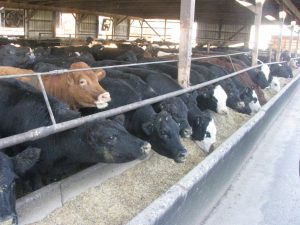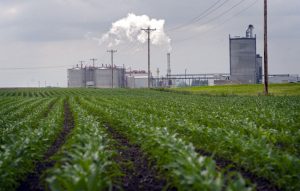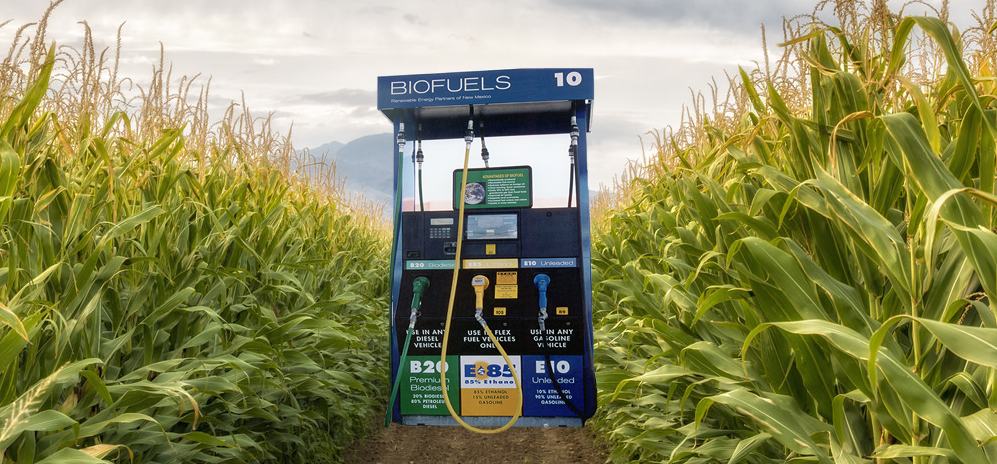We cover today a new estimate of the increase in carbon emissions per year from renewable-fuels-driven land conversion over a five year period (2008-2012) in this “In the News” item.
This latest study from the University of Wisconsin-Madison will surely not settle the ongoing debate over whether corn ethanol and soy biodiesel increase or decrease net greenhouse gas emissions. But the study sharpens some critical land use estimates that will be central in producing more accurate estimates.
Three key points deserve additional attention.
First, in reacting to the new UW-Madison study, Geoff Cooper of the Renewable Fuels Association challenges the core finding that substantial land use conversion to corn production has occurred, because corn acres actually fell about 3% from 2007 to 2017 (not the time period covered in the UW study, 2008-2012).
Cooper is both right and wrong, and knows it.
Based on official USDA data, there were 86 million acres of corn planted in 2008, and 97.3 million in 2012 — an increase of 11 million acres. Over this same time period, soybean acreage rose just 2 million acres, from 75.7 to 77.2 million acres.
The UW team’s estimate of land use shifts into corn over the 5 years 2008-2012 seems about right, assuming about two-thirds of the 11 million acre increase in corn production came out of a reduction in wheat and other cropland uses, and about one-third from conversion of grasslands and other non-crop land uses to corn.
Yes, national corn acres planted did drop modestly from 2007 to 2017, as Cooper and the RFA points out. But he fails to mention he used 2007 to 2017 in his calculation, when the UW team used 2008 to 2012 in theirs. Just a technical detail? I think not.
2007 corn acres planted = 93.5 million
2008 corn acres planted = 86 million
2012 corn acres planted = 97.3 million
2017 corn acres planted = 90.9 million acres (down about 3 million from 2007, up almost 5 million from 2008)
The reason total corn acres did not rise from 2007 to 2017 is because of the huge, price- and profit-driven shift from corn to soybeans beginning in 2011, a shift that occurred throughout the heart of the Cornbelt.
Between 2012 and 2017, corn acres fell almost 7 million, while soybean acres rose over 12 million.

A second factor cited by the Renewable Fuel Association is the increase in average crop yields in this time period. It is also true average national corn yields rose some 15%, which is notable given that millions of acres of less productive land were brought into corn production in this period.
Average national yields have risen, and may continue rising, because of significant intensification of corn production in the Heartland, brought about by much higher seeding rates per acre, more fertilizer and pesticides per acre, and expansion in acres under irrigation.
Each of these ways to increase corn production per acre also almost inevitably increases net greenhouse gas (GHG) emissions per corn acre. The one exception is certain irrigation technologies that allow farmers to spoon-feed crops nitrogen over the course of the growing season, a precision farming practice that can reduce net GHG emissions per bushel of corn produced, despite very high levels of input use.
So, intensification of corn production is a classic double-edged sword. It increases total production, but also net GHG emissions on the average corn acre.
It supports growth in the ethanol industry and jobs in rural communities, but raises the average cost per corn bushel harvested. It makes farmers more dependent on decent-to-good weather to turn a profit, and increases loses per acre in bad years. It heightens farmer dependence on federal crop insurance and income support programs, raising reliance on government programs most farmers would rather live without.
And last, the enormous public investment in corn- and soybean-based biofuels over the last 20 years (hundreds of billions of $$) has meant federal funds were not available for other, nationally significant investments in agricultural innovation, nor major food system change.
Imagine instead that 20 years ago the U.S. Congress decided to improve the quality of fat in the American diet, to slow down the increase in overweight and obesity, diabetes, and heart disease, rather than in the expansion renewable fuels production to enhance energy security.
The best ways to enhance the nutritional quality of the American diet were known 20 years ago, and entailed two critical, public-health driven shifts in U.S. agriculture and food system priorities.

First, livestock farmers would need to reverse the trend toward greater reliance on corn- and soybean-based concentrate feed, by incrementally shifting back toward greater reliance on grass and legume forage-based feeds.
Second, the government needed to slow the rapid expansion in the use of corn and soybean oil in a variety of foods, and especially in the fast food industry, in order to reduce the massive increase in omega-6 intakes and the erosion in omega-3 intakes. Not only has the amount of fat increased in average diets over the last several decades, the quality of fat in the diet has also tanked – this blog piece digs into this story a bit.
So, imagine if the Congress had decided to adopt public-health driven farm policy goals in the 1985 and subsequent farmbills, instead of energy-production goals. Instead of converting tens of millions of grassland acres to renewable fuel production, we would have tens of millions more acres devoted to growing rotations including corn, soybeans, and high-production forage-crops.
Expanding fruit and vegetable production would also have been a prudent investment, and one with a very high rate of return.

Instead of building publicly-subsidized ethanol plants across the Midwest, and now on its fringes, we would have invested public dollars in plants producing stable, easy to store and ship forage-based livestock feeds. Just as in the case of renewable fuels from corn and soybeans, a mix of spending, tax, and other public and private investments in forage-based feed infrastructure would have steadily reduced the cost of forage-based feeds, increased the supply dramatically, and improved their quality.
Mostly grassfed beef and milk would account today for a majority of current consumption, instead of a small but growing fraction. Farmers would be better off, especially if public policy helped assure that the full range of human health, animal health, public health, and environmental benefits were reflected, at least to a meaningful degree, in the price of forage-based feeds.
We would be facing fewer and less serious cases of chronic diseases, lowering health care expenditures and enhancing quality of life for millions of Americans.
Perhaps down the road, after the last corn ethanol plant is shut down, unable to compete with new energy technologies, the nation will invest in the research needed to quantify the costs and benefits of the path taken, and the options smothered out, as a result of our all-in bet on renewable fuels.
There are important lessons to learn from such a final accounting, but even if the research is done, will the lessons be heeded?
Our track record in recent years is not good and seems destined to get worse as public-interest science loses its ability to inform and guide public policy.

